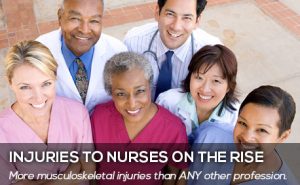On November 2, 2014, a Minnesota patient detached a metal bar from his hospital bed and used it to attack four nurses; one nurse suffered a collapsed lung, another broke her wrist, and the others had cuts and bruises . . . as well as bad memories of the night.
While some people might view the frightening event as an oddity, the Bureau of Labor Statistics reports that healthcare workers are some of the most likely workers to be attacked while on the job. According to OSHA, two out of three (on-the-job) physical assaults happen in the medical care and social service industries, and the numbers are going up. A survey underwritten by the Foundation of the International Association for Healthcare Security and Safety (IAHSS) found that the number of crimes increased by nearly 37 percent in just two years, from just under 15,000 in 2010 to more than 20,500 in 2012. Reported crimes included simple assault, larceny and theft, vandalism, rape, sexual assault and homicide. Even more disturbing than this increased number of violent crimes in healthcare settings is the likelihood that many incidents are not reported – at least one half, according to U.S. Department of Justice estimates.
 South Carolina Lawyer Blog
South Carolina Lawyer Blog



